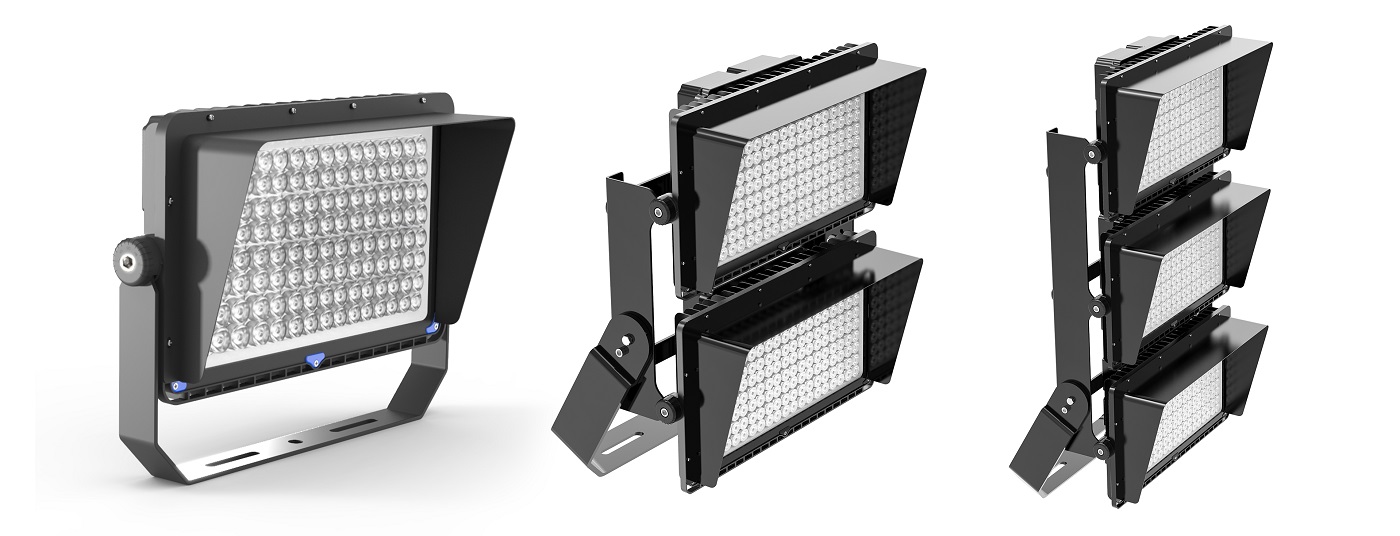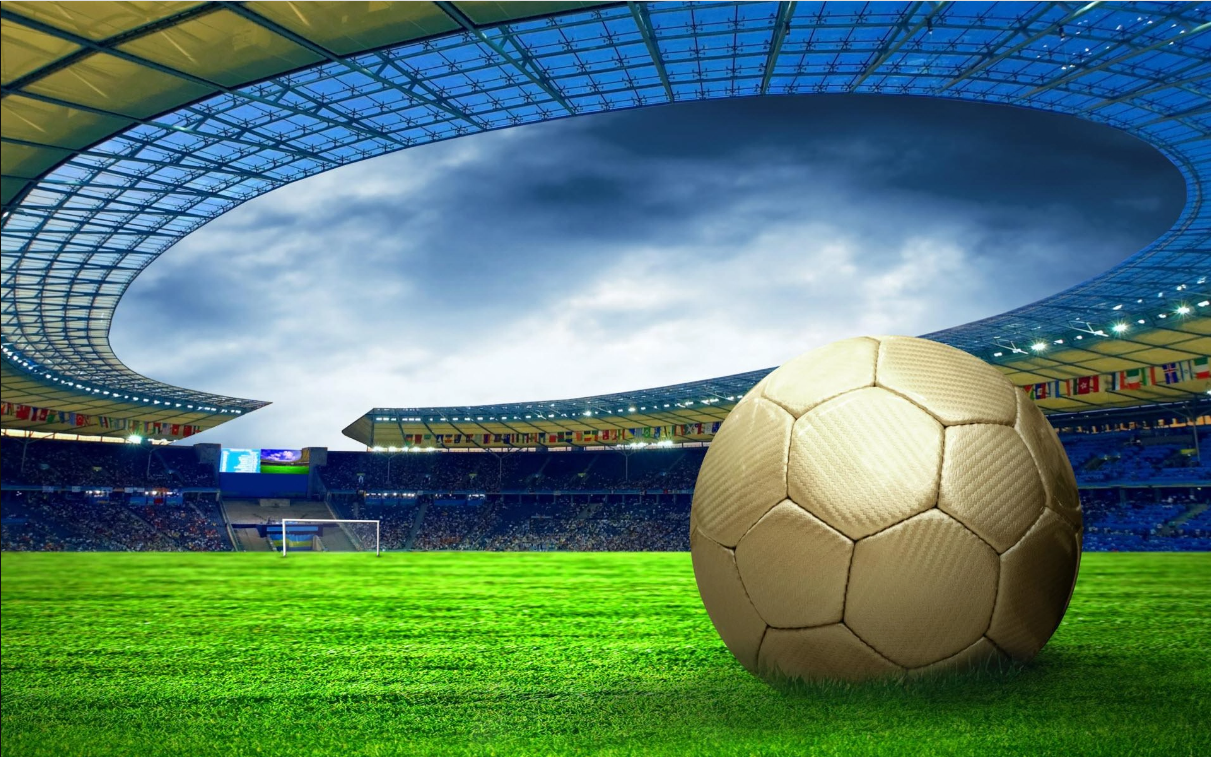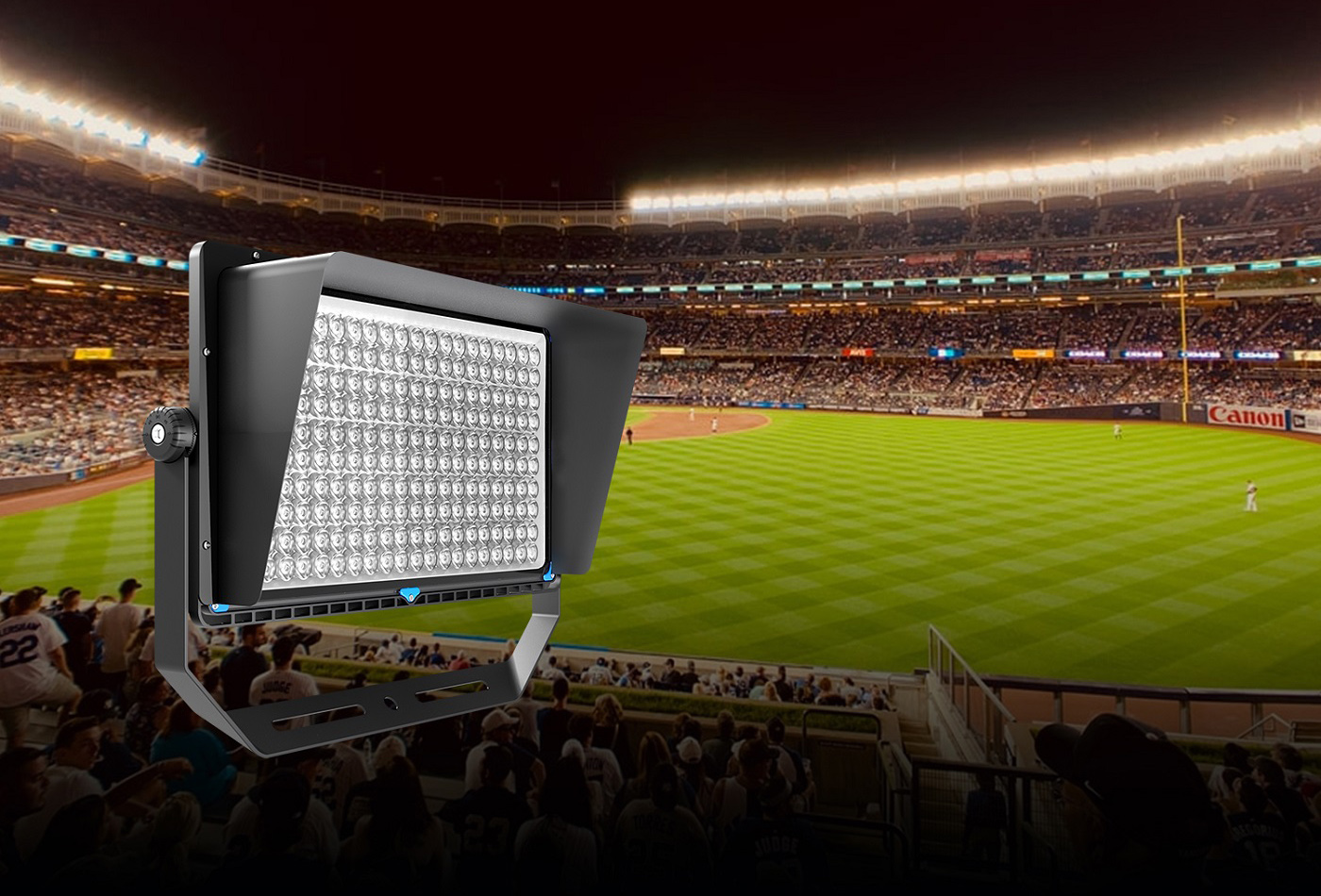You might be thinking about replacing traditional lighting with LEDs. Football is a very popular sport. In the past, football was only played outdoors. It is now a sport that can be played indoors and outdoors all day.
Lighting plays a significant role in indoor stadiums, particularly when it comes to lighting. By properly lighting the stadium, LED lighting can keep everyone safe. It also has an impact on the performance and efficiency of the players. This helps to improve the vision of both players and spectators. They will not perform well if the light is too harsh.
Every sport has its own lighting requirements so there is no single type of lighting that will work for every venue. When purchasing LED lighting, you should pay attention to the lighting requirements. It is difficult to find the right type of LED lighting for your football stadium.
What is Football Lighting?
High-power lights are used to light a football stadium. A good lighting system will evenly distribute the light throughout the stadium. The lights are usually located on both ends of the football stadium.
The right lighting is crucial, no matter how large or small the stadium. Both players and spectators will see better if the stadium is well lit. Everyone must be able to see the ball.
Lighting Requirements for Football Field
There are things you should pay attentions before changing the lighting in your football stadiums.
1. The power of LED lights
You should first consider the amount of power that LED lights will require. This example will help you understand the power requirements. The football field measures 105 x68 m. It might take 2,000 lux to cover the entire field. The total required lumens are 7,140 x2000 = 14,280,000. The LED light produces an average of 140 lumens per W. Minimum wattage is 140 x 14,280,000 = 102,000 Watts.
2. Brightness Level
The brightness level is an important factor to consider. Vertical and horizontal luminance are required for lighting the football field. Vertical luminance is used to create portraits of the players. Horizontal luminance, on the other hand will cover the football field.
The recommended lighting level for the football stadium is 1500 lux vertically and 2000 lux horizontally.
3. TV Broadcasting Compatibility
4K TV broadcasting has become the norm in our digital age. The LED light must have a good vertical and uniform luminance to allow high-quality photo and video production. You will also need to make efforts to minimize the glare from the lights. LED lights are a great choice because of this.
Anti-glare optics are a feature of most LED lights that eliminate flickering and dazzling. The brightness can be maintained by using a special lens coating and lens cover. However, unwanted glare can also be reduced.
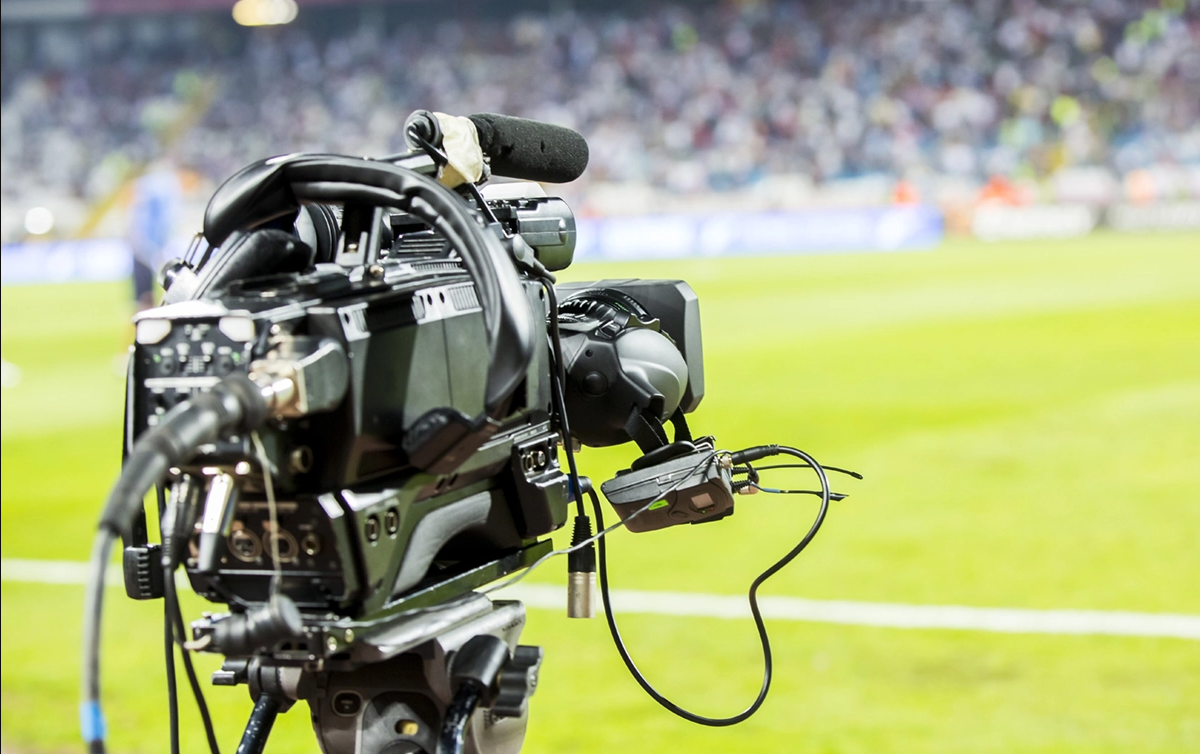
4. Uniformity in Light
The UEFA authorities state that the uniformity of the lighting on the football field should be between 0.5 and 0.7. A scale from 0 to 1 is used to measure the uniform distribution of light. This is a crucial factor in lighting a football stadium. This is because uneven lighting can adversely affect players and spectators’ eyes. Because the light spot is circular or rectangular, some areas may overlap while others will not. It must be less powerful and have a narrower beam angle to provide uniform LED light. An asymmetric design can be used to improve the lighting distribution.
5. Pollution Problem
Light pollution should be avoided when there is good lighting on the football field. Because light pollution has an immediate impact on neighboring areas, The stadium’s ground brightness should be between 25 and 30 lux.
VKS Lighting have all kinds of LED lights, including those for the Olympic Games and professional League.
6. The Roof’s Height
The stadium roof must be at least 10 meters high. The stadium roof must be between 30 and 50 meters high. To get the best lighting, it is important to minimize the luminance loss. It is important to remember that light loss is inevitable. The football field does not receive 100% of the light beam. The surrounding area receives 30% of the light beam.
There are two simple ways to solve this problem. You can improve optics or increase the number of lighting fixtures. To light up a stadium, for example, you will need 10,000 watts. To achieve the best result, you’ll need 12,000-13,000 watts.
7. Lifespan
As long as the light is on for at least 8 hours per day, the lighting’s lifespan should be good. LED lights offer a longer life span than traditional lighting, with an average of 80,000 hours. They can also last up to 25 years without any maintenance.
VKS Lighting is the ideal lighting solution for any stadium, with LED lights that are high-quality and last a long time.
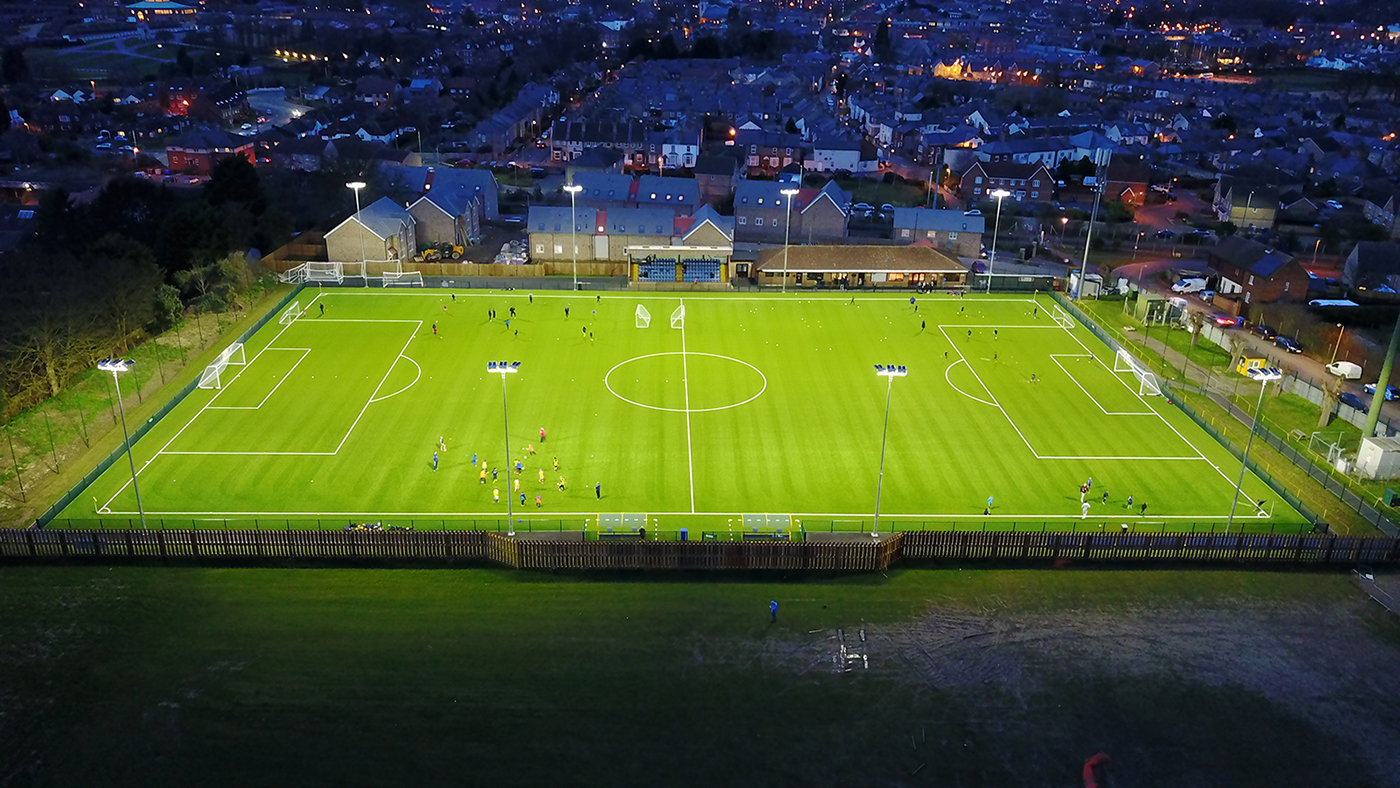
Here are some points to consider when designing lighting for football fields
Good lighting is essential to unleash the stadium lights’ full potential. It is not enough to just place light poles on the field. There are many factors to be aware of.
1. The Size of a Football Stadium
To have accurate stadium lighting, it is necessary to know the location of the stadium’s poles and layout. A 3D model of the stadium need to be created. It is important to remember that the more information you have the better the lighting plan.
The stadium is equipped with either a 6-pole, 4-pole or round roof lighting arrangement. The mast pole’s height varies between 30 and 50 meters. The stadium’s size is crucial when it comes to installation. The stadium is fitted with lights that correspond to 3D light poles.
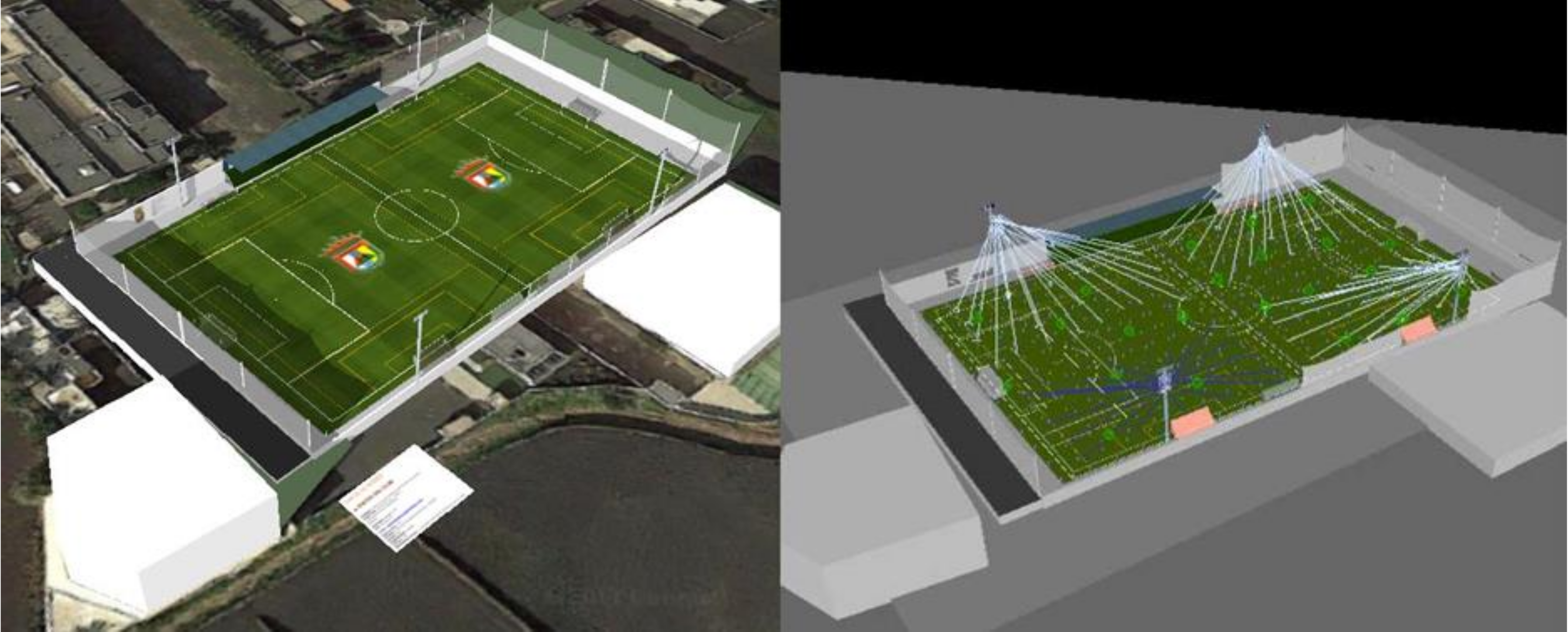
2. How to Choose the Best LED Stadium Lights
You will need a lot of high-power LED lights to light up a stadium for the Premier League, UFEA or other professional games. It is not recommended to use the same layout or setting for different projects. Because the pole height, lux requirements, and horizontal distance between poles and fields are all different, this is why it is not recommended to use the same setting or layout for multiple projects. Each stadium has different lighting settings.
VKS Lighting is an expert in LED lighting and can help you select the right beam angle combination as well as power for your stadium.
3. Test the Lighting
The software will rotate the lights to improve uniformity. To optimize brightness and uniformity, each light can be adjusted to adjust its projection angle.
4. Photometric Report
After the adjustment has been completed, a photometric file is generated that includes excellent available optics and luminaires. This DIALux file includes isolines, false colors rendering, and value tables. This file helps to provide uniform and precise lighting in the stadium.
How do you choose the best LED light for your football stadium?
When choosing the right LED light, there are many factors to take into consideration.
1. Luminous Efficacy
The luminous efficiency is something you need to pay close attention to. LED lights are durable and high quality lights that can be easily maintained. They can use less light and have a lower power consumption.
2. Anti-glare Feature
This feature is not often noticed. Both players and the audience can feel discomfort from glare. This can affect the player’s vision and playability. An LED light with anti-glare lenses is necessary to clearly see what you are seeing.
3. Color Temperature
Color temperature is another thing to consider. 4000K is the minimum required color temperature for a football stadium. For better illumination and brightness, the color temperature should be between 5000K and 6000K.
4. Waterproofing Grade
An IP66 rating is required for the LED light to be waterproof. This is important because the light can be used outdoors as well as indoors.
5. Heat dissipation
Because they don’t trap heat, LED lights are better for football field lighting. The heat can reduce the life span and increase the chance of an accident.
Football field lighting is an important aspect so it must be planned carefully. This guide should help you select the right LED light. VKS Lighting can help you if you have any questions.
Lighting Standard
For football fields, referring to the standard EN12193, the following lighting requirements are required:
Indoor Football Field
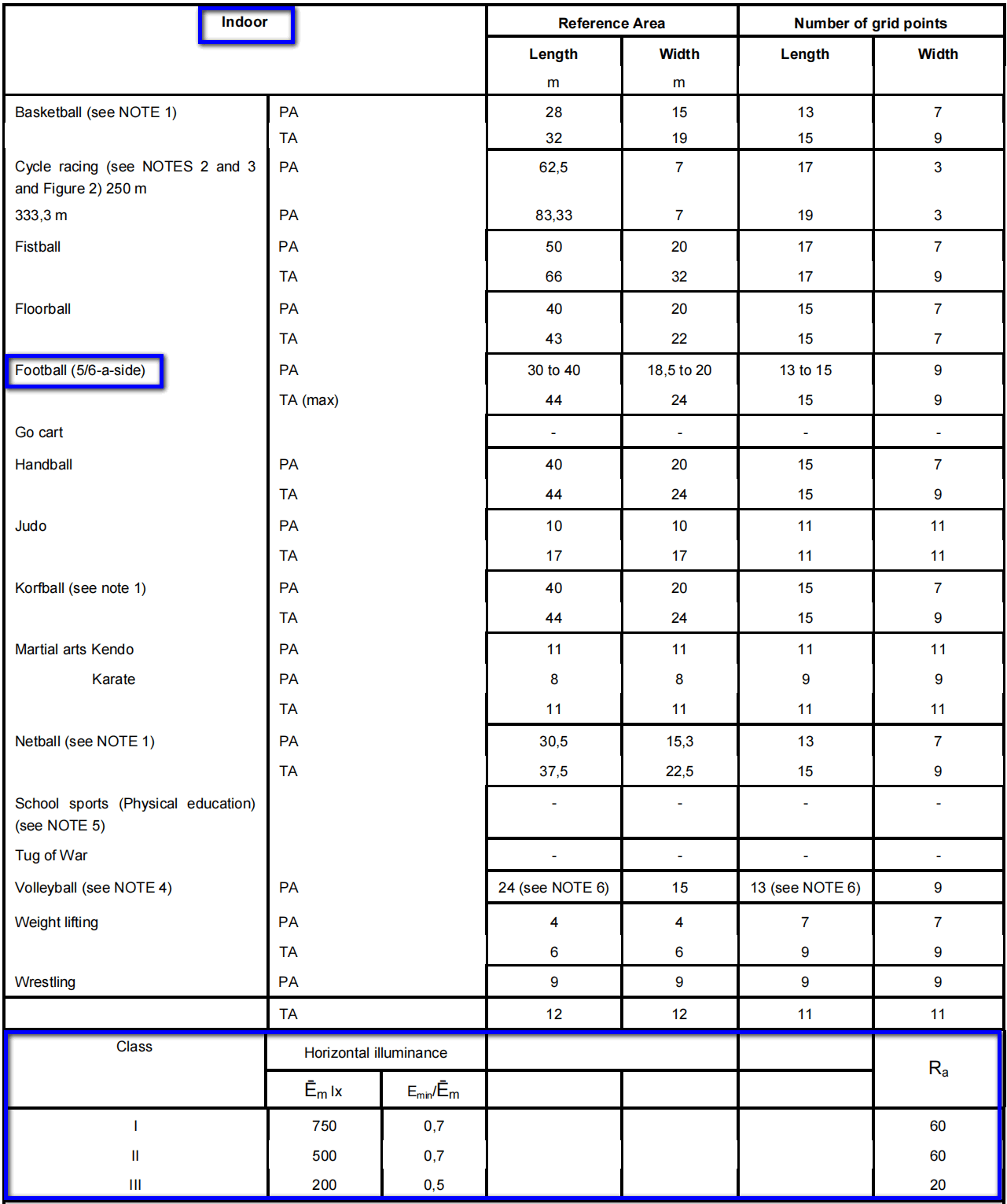
Outdoor Football Field
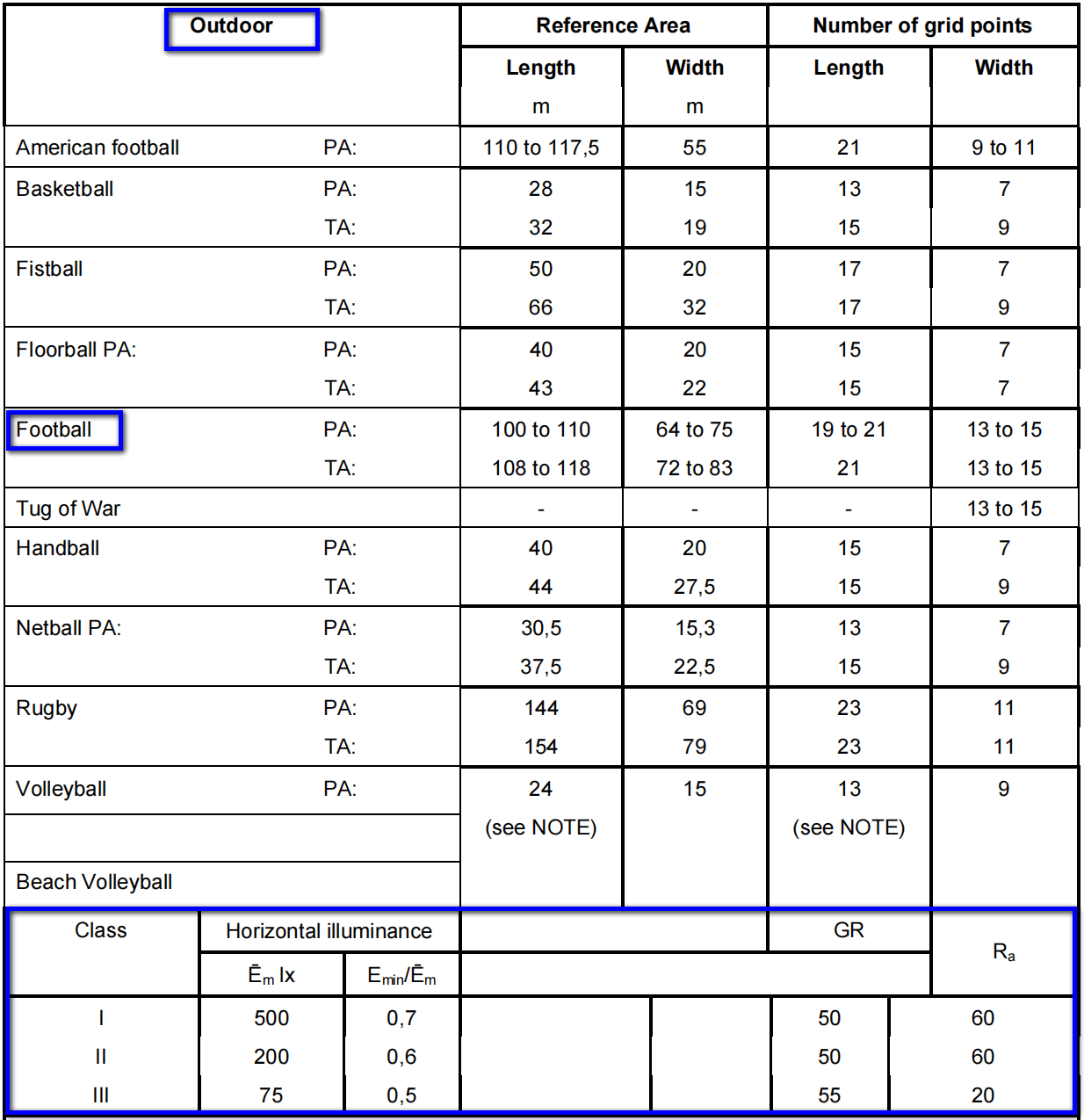
Lighting Arrangements – Outdoor football field
1. These are common lighting methods that don’t require a TV relay:
a. Layout with four corners
When arranging the corners of a field, the angle from the bottom end of the light pole to the midpoint on the sideline and field sidelines should not exceed 5deg. The angle between that line and the midpoint on the bottom line and bottom line should not be smaller than 10deg. The height of the lamp should be such that the angle from the centre of light shoot to the venue’s plane should not be lower than 25deg.
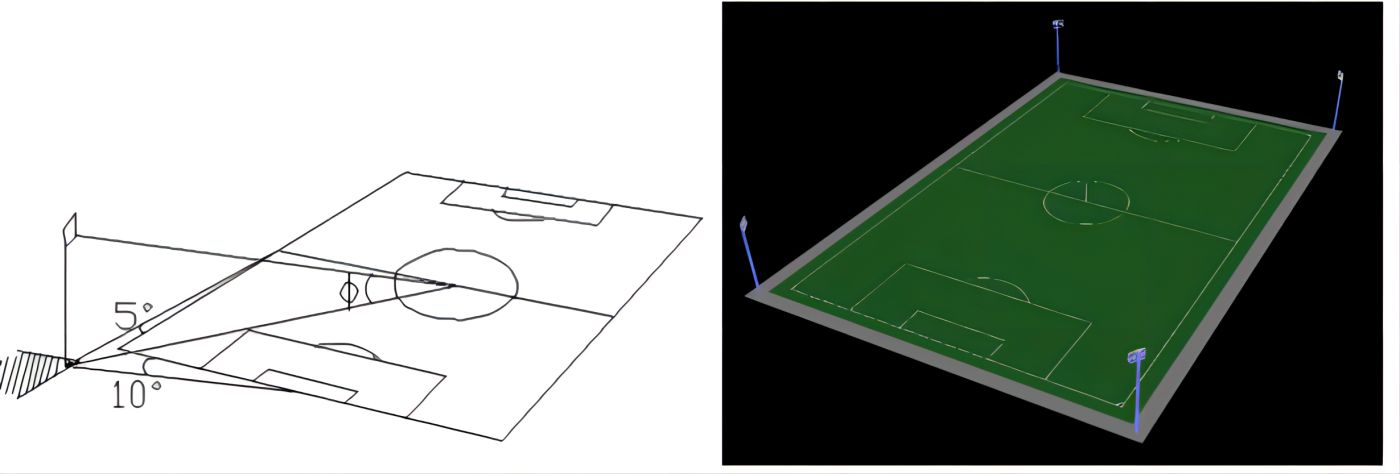
b. Side arrangement
The lamps should be placed on both sides of a field. They should not be within 10° of the goal’s center point along the bottom line. The distance between the bottom pole and the field side line should not exceed 5 meters. The lamps must be at the included angle between the vertical line between lamps and the field plane.
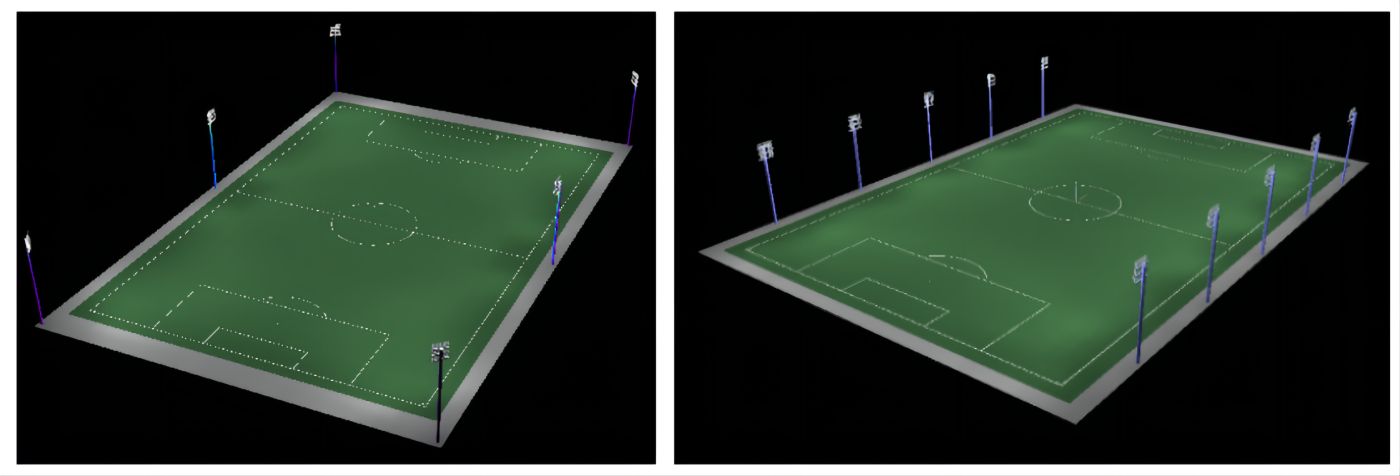
2. The following points should be considered when lighting a football stadium for broadcast requirements.
a. Use the layout on both sides to create the venue
The lights should be placed on either side of the goal line, but not within 15 degrees of the center point.
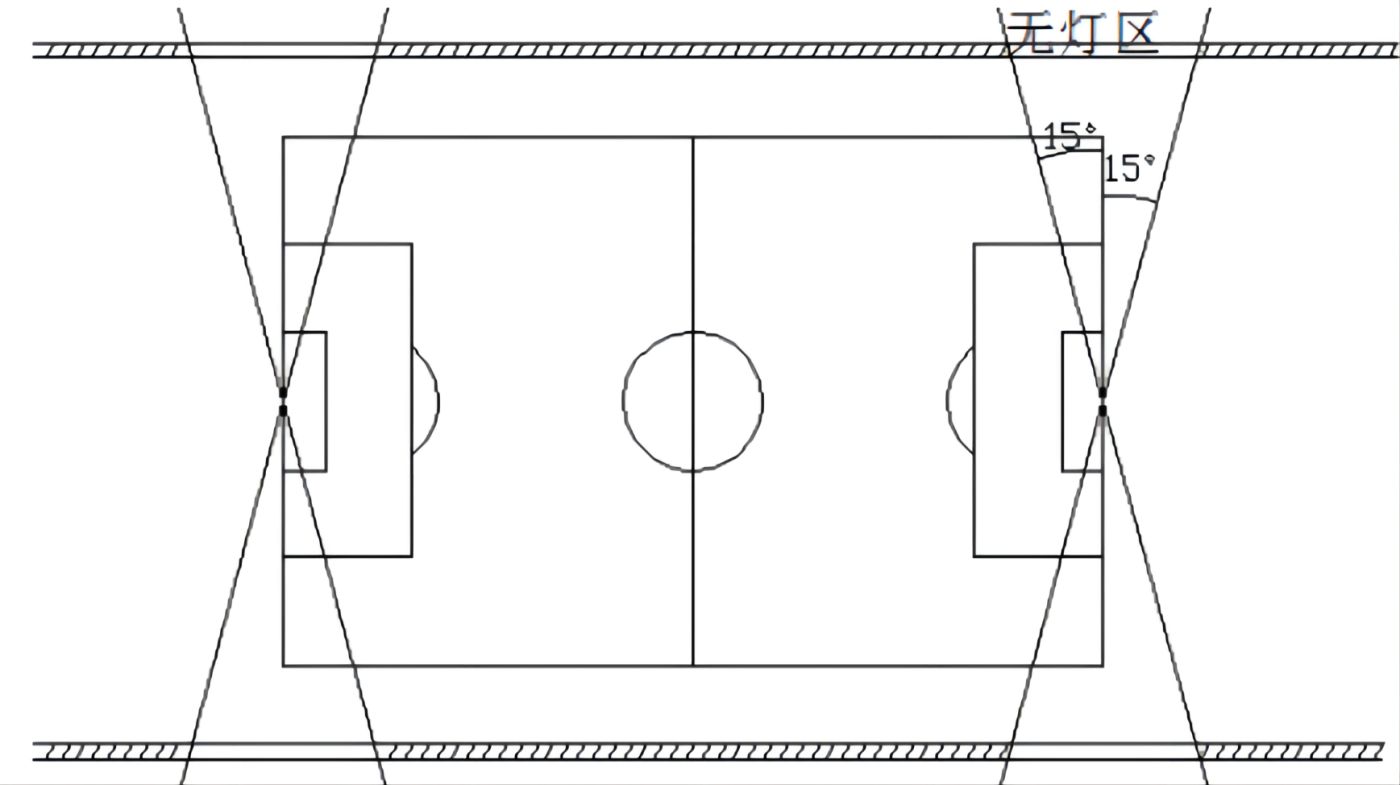
b. Once the corners are organized.
The four-angle arrangement should be adopted. The included Angle between line from bottom of lamp pole to midpoint of field sideline and field sideline should not be lower than 5deg. The included Angle between line from bottom of lamp pole to midpoint field sideline and bottom line should not exceed 15deg. The lamp’s height should be equal to the angle between the line at the center of a light pole and the center field and the plane, which should not exceed 25deg.
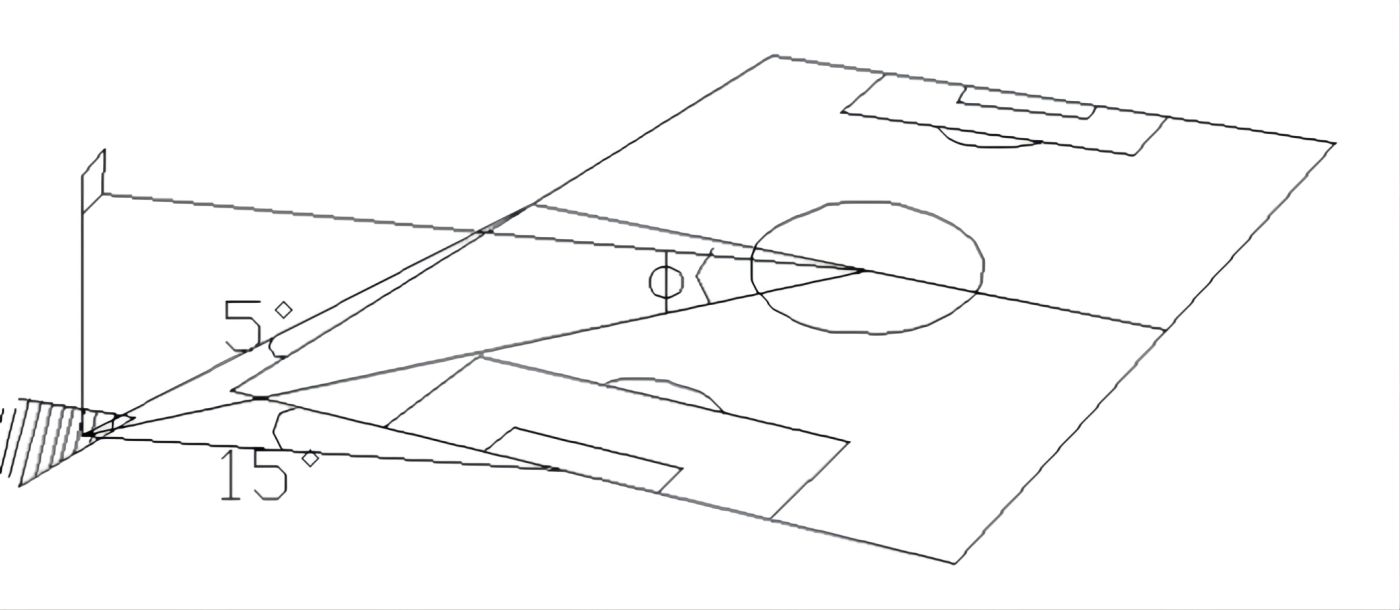
c. If a mixed layout is used, the height and position of the lamps must meet the requirements for both the four-corner and side layouts.
d. In all other cases, the arrangement of light poles must not block the view of the audience.
Lighting Arrangements – Indoor football field
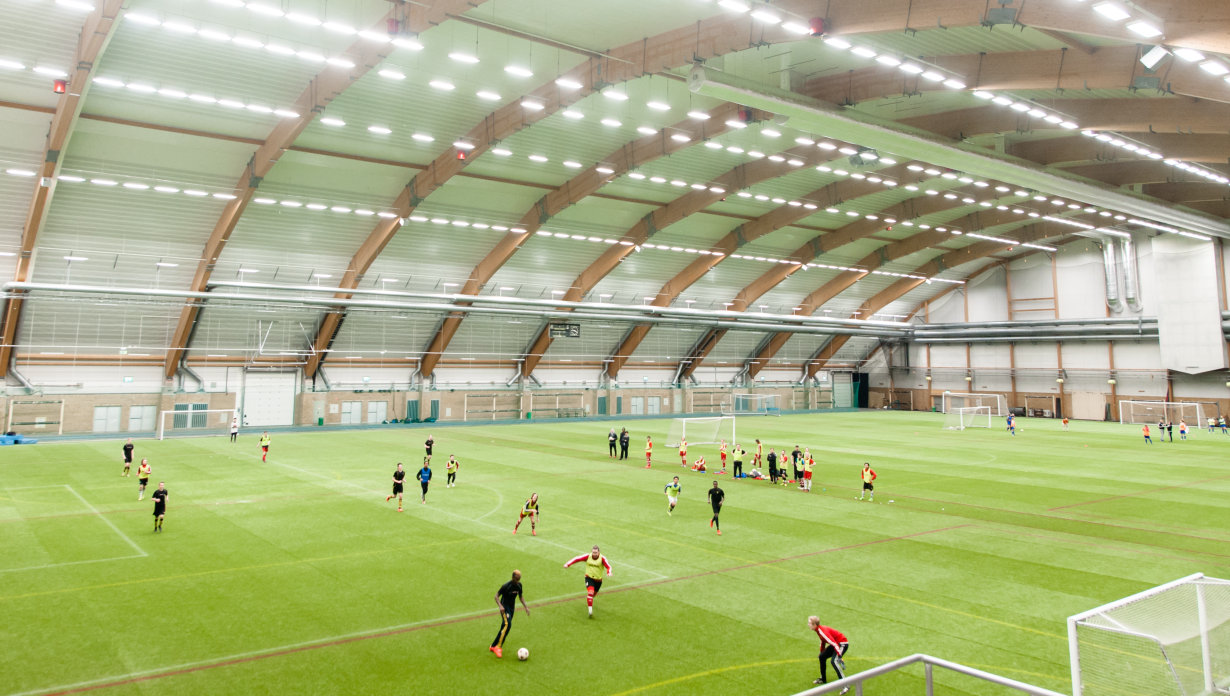
Indoor football courts can be used for entertainment and training. These lighting options can be used in indoor basketball courts:
1. Top layout
This luminaire is not suitable for scenes with low demand. A top luminaire can cause athletes to glare. It is best to use both sides for high-demand jobs.
2. Installation of side walls
Floodlights should be used on the sidewall to provide vertical illumination. However, the angle of projection should not exceed 65deg.
3. Mixed installation
The lamps can be arranged in either a top or side-wall installation.
LED Football Floodlights Selection
When choosing football field lamps, you should consider the location, beam angle, and wind resistance coefficient. The VKS LED flood lamp with light source is a replica of the imported brand. Its beautiful, generous shape will enhance the appearance of the entire sports field.
Post time: Dec-22-2022

